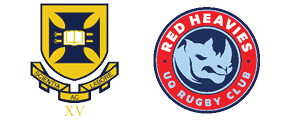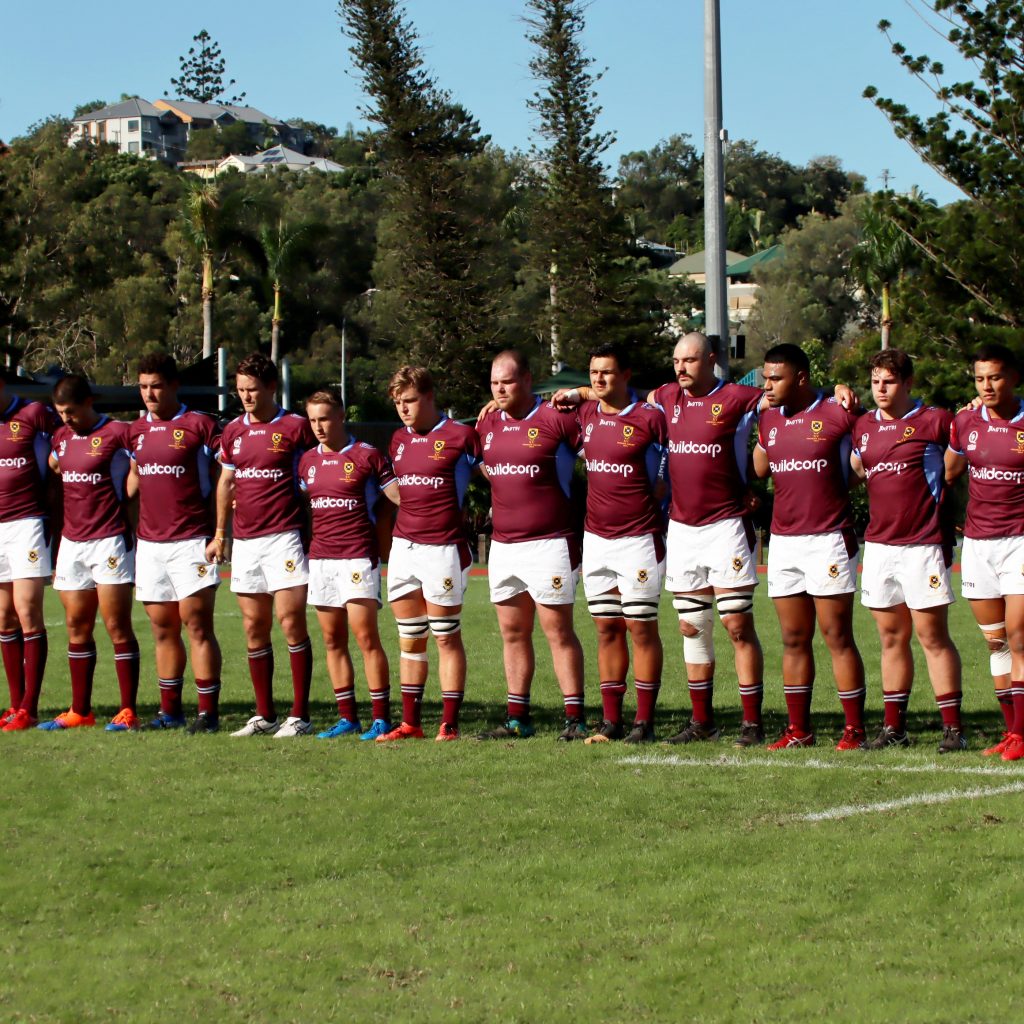Latest News
Fallen Heavies
To commemorate ANZAC Day, the Red Heavies would like to salute four of their fallen past players who didn’t return from war, and one that did, but died from his war wounds.
FRANCIS, Trevor
Brother of the Club’s First Wallaby Eric Francis (Wallaby #140 Queensland #347 and UQ Queensland Rep #4) and Stanley Francis (Queensland #352 and UQ Queensland Rep #6). Trevor Francis was born in Wynnum on 8 May 1890 was educated at the Ipswich Grammar School, where he gained distinction. Thence he went to the Queensland University studied Civil Engineering at the University of Queensland. He played on the wing in Football and won a Blue in Athletics in 1912 and 1913 when he was the Queensland record holder for the 440 yards. Trevor was the first of his brothers to sign up on 24/8/1915. He received his commission as Second Lieutenant on 16/3/1915. Trevor’s older brother Vincent and younger brother Eric were also both officers in WW1. His youngest brother Stan drew the ‘short straw’ literally and was forced to stay home, against his will, to help his father on the family property, and when the war broke out immediately offered his services.
Captain Trevor Francis was killed in action on 14 March 1917 in Bapaume, France.
FRYER, John Denis (“Chut”)
Born in Springsure on the 11 September 1895, his parents worked at the local hospital. Jack was able to attend Rockhampton Grammar School by winning a District Scholarship. Under the headmastership of Mr Kellow, he won a University Scholarship which took him to the University of Queensland in 1915. He lasted less than a term before enlisting for service in World War I in June 1915 as a Lieutenant where he served in France where he was gassed in early 1917. After hospitalisation in England, Jack returned to France for the final push to Amiens in August 1918. There he was wounded by a stick bomb before returning in Australia in May 1919. Despite being severely disabled with his skin regularly erupting with boils and rashes he continued to strap on the boots being awarded a Half Blue for Rugby in 1921. He was a fine halfback standing at just over 5 foot 11 inches and weighing 155 pounds.
In 1922 he undertook study towards Classics Honours. But Jack’s war injuries were to take their toll. Too sick to sit for his final honour’s examinations, he returned home to Rockhampton and died on 7 February 1923 of peritonitis arising from being gassed in France.
GANNON, William John
Born in Townsville on 28 May 1919, he came from the Julia Creek. His early schooling was at Julia Creek and later at All Souls’ at Charters Towers where he excelled in tennis, rugby and athletics. He attained his University scholarship at the end of 1936. He went on to enrol at the University of Queensland in 1940 and he received a Blue for football in the same year. Selected as a centre in the Brisbane team on the 1 June 1940 to play Toowoomba, he impressed the selectors playing in the forwards. On this performance, he was selected for the Queensland team after only three club matches for University.
Defying his father, he joined the 2nd Australian Imperial Force (2nd A.I.F.) in and died in Malaysia. Serving as a Lance Bombardier in the 2/10 field regiment, he was a prisoner of War. Dying from an illness as a prisoner of war on the 17 June 1945 in Borneo, he was one of over 2000 Allied prisoners of war (POW) held in the Sandakan POW camp in north Borneo, having been transferred there from Singapore as a part of E Force.
PARKER, Chester James
Chester James Parker was born in Charters Towers, Queensland, Australia on 29 July 1916. His father was James Athol Parker [1875-1954] and his mother was Margaret Ann nee Brennan [1894-1974]. They had eight sons and two daughters. Chester James was their second son.
Played with the Rugby Club and was selected as the Queensland Rhodes Scholar for 1938. He has played football for the University for three seasons and in his second year was captain of the B grade team. He was a member of the Queensland University football team which won.
At the outbreak of the war, he joined the Royal Naval Volunteer Reserve and was serving as a Lieutenant on HM Submarine Thorn on 6 August 1942 when she was sunk whilst attacking a convoy about 30 nautical miles south-west of Gavdos Island. HMS Thorn was declared overdue on 11 August 1942. He is commemorated on the Portsmouth Naval Memorial.
STUMM, Harley Charles
Harley the eldest of four children and only son to the Stumm family, of the property “Penlan Downs” in the Longreach area and was born in Gympie on 29 August 1913. Educated at The Southport School from 1927-1931, he played in the school First XV and rowed in the eight at The Southport School. He studied Arts Law at the University of Queensland from 1932 through the Arts Faculty as the University did not have its own Law school. A lock forward and lived at King’s College at Kangaroo Point and gaining a Half Blue in 1933 and a Blue in 1939. He also was a notable rower in the University VII and was also an active member of the dramatic and debating societies.
He was called up to the RAF to serve in Singapore He had a distinguished career and even coached the RAF team to victory in the inter-service rugby union competition. Attaining the rank of Wing Commander and a decoration in the form of a D.F.C, he commanded 11 Squadron 1943-44 and the 45 Squadron in 1944.
After the war he intended to practise law before eventually moving into Federal politics. Unfortunately, this was not to eventuate when he was killed in action when his Mosquito crashed in India on 13 May 1944 and is buried Madras War Cemetery. The Southport School named the school Library in 1977 and later the Harley Stumm Centre for Library and Communications in his memory in the nineties.







